Overview
Brand packaging design is essential, serving not only to protect products but also to communicate a brand's identity and values. This aspect significantly influences consumer purchasing decisions. Effective packaging attracts buyers through visual appeal and functionality.
Statistics reveal that a substantial percentage of consumers make impulse purchases based on attractive packaging and are willing to pay more for eco-friendly options. This underscores the strategic importance of thoughtful design in marketing.
In a competitive marketplace, investing in high-quality packaging is not merely an option; it is a necessity that can differentiate a brand and enhance its market presence.
Introduction
Brand packaging design serves as the visual gateway to a product, playing a crucial role in shaping consumer perceptions and influencing purchasing decisions. In an increasingly saturated market, the significance of effective packaging cannot be overstated; it not only protects the product but also communicates a brand's identity and values.
With evolving consumer preferences and a growing emphasis on sustainability, brands face the challenge of navigating this complex landscape. How can they create packaging that captivates and retains customer loyalty? This question underscores the need for innovative solutions that resonate with today’s conscientious consumers.
Define Brand Packaging Design and Its Significance
Brand packaging design is the cornerstone of a product's exterior, encompassing its visual appeal, structural integrity, and material selection. This process is vital for and values while ensuring the product remains protected and functional. Effective brand packaging design not only captures buyer interest but also communicates essential information, including usage instructions and ingredient lists. In a marketplace saturated with options, the importance of brand packaging design cannot be overstated; it often represents the initial interaction between consumers and products, significantly influencing purchasing decisions and fostering brand loyalty.
Research indicates that:
- 72% of buyers acknowledge the substantial impact of packaging aesthetics on their purchasing choices.
- 76% of consumers have made impulse purchases driven by attractive packaging.
Companies that prioritize intentional creativity can craft compelling narratives that resonate with their target audience, enhancing engagement and driving sales.
Successful examples of brand packaging design highlight its influence on brand identity. For instance, businesses that effectively employ color psychology can evoke emotions and sway consumer behavior, with 85% of shoppers identifying color as a key factor in their purchasing decisions. Moreover, brands that focus on user-friendly features in their brand packaging design, such as easy-to-open designs, tend to enjoy higher customer satisfaction and loyalty.
At Western Packaging, we specialize in innovative solutions tailored for nutraceutical manufacturers. Our versatile packaging options incorporate eco-friendly materials and cutting-edge design techniques that enhance product visibility and appeal. The unboxing experience also shapes buyer perceptions; companies that invest in memorable packaging can set themselves apart and cultivate deeper connections with their customers. As the industry shifts towards sustainability, businesses that adopt eco-friendly practices not only meet consumer expectations but also strengthen their market position, with 63% of consumers indicating that sustainable materials positively influence their perception of a brand.
In conclusion, brand packaging design is not merely a protective layer; it is a fundamental aspect of a company's marketing strategy, capable of building trust, conveying value, and transforming customers into advocates.
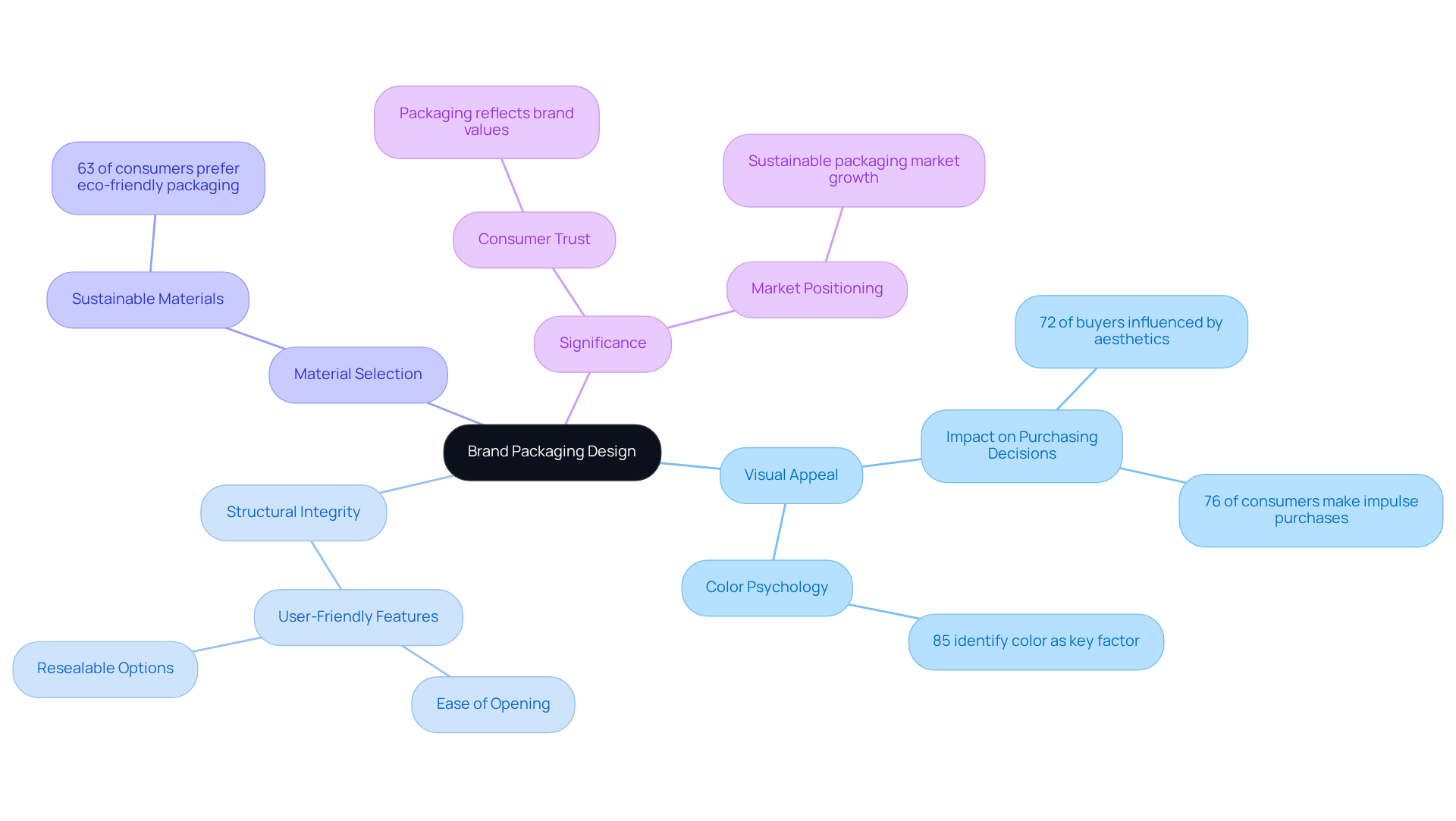
Explore the Evolution of Brand Packaging Design
The development of product container design has its origins in the early days of commerce, where the primary aim was to safeguard items during transport. As markets expanded and competition intensified, companies began to recognize the visual significance of brand packaging design for their containers. The late 19th century marked the emergence of color printing—a pivotal moment that empowered companies to create brand packaging design that attracted customer interest and distinguished their products in saturated markets.
In recent decades, digital technology has revolutionized brand packaging design, enabling companies to explore innovative materials and interactive styles that enhance user engagement. This transformation has led to an , enabling personalized and dynamic solutions for containers.
Currently, brand packaging design is at the forefront of sustainability, as companies are increasingly committed to creating eco-friendly options that appeal to environmentally conscious consumers. Research indicates that approximately 50% of individuals in the US are willing to pay a premium for eco-friendly containers, reflecting a significant shift in buyer preferences. As companies navigate this evolving landscape, integrating sustainable practices into brand packaging design not only meets consumer demand but also helps cultivate a positive brand image and enhance customer loyalty. At Western Packaging, we acknowledge this trend and provide integrated solutions that address sustainability concerns while enhancing product appeal.
Overall, the process of creating containers through brand packaging design illustrates a continuous interplay between functionality, aesthetics, and sustainability, influencing how companies connect with their audiences in a dynamic market. Our expertise ensures that your container not only protects your product but also enhances its shelf appeal and recognition, ultimately optimizing your supply chain.
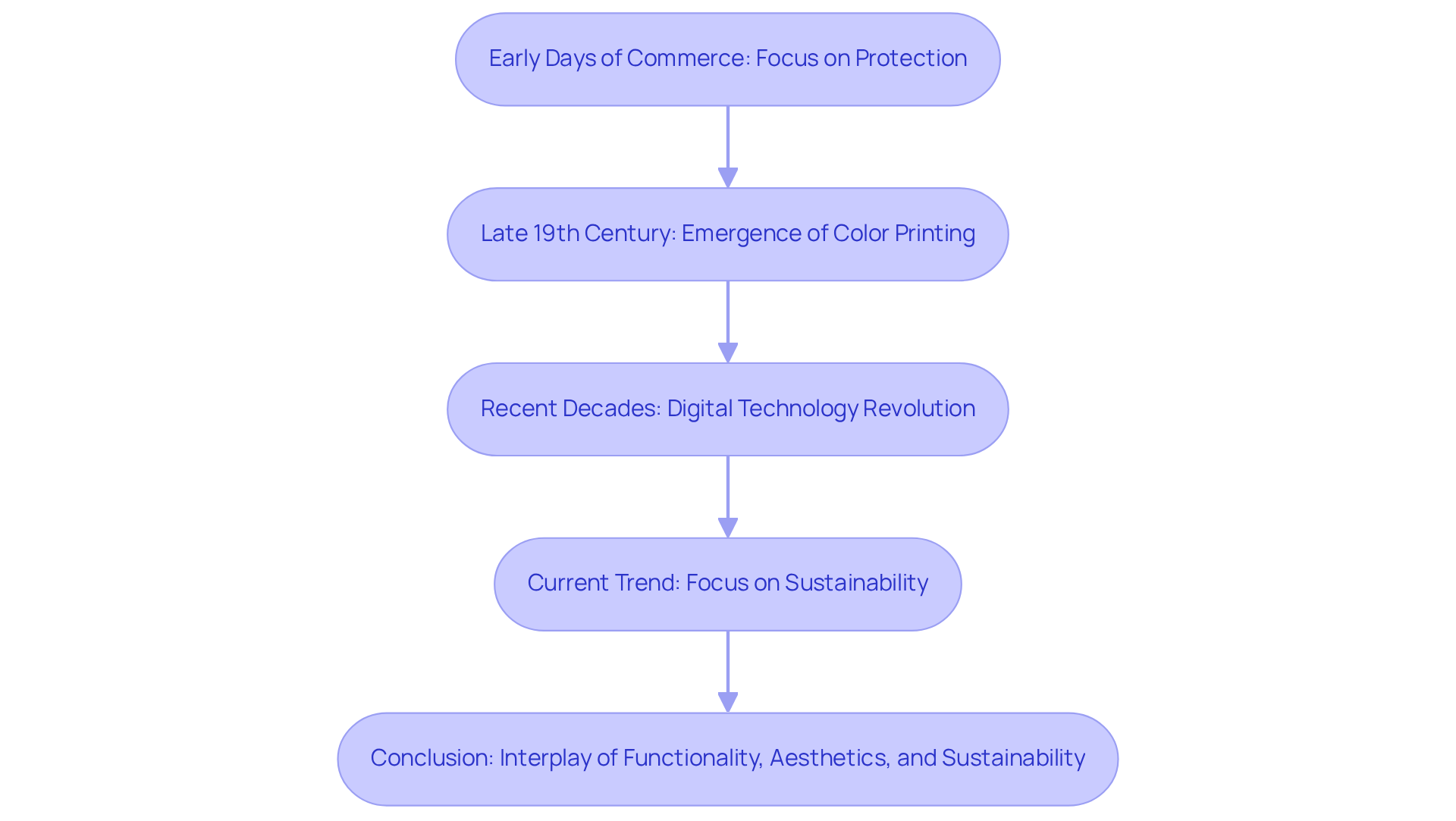
Identify Key Characteristics of Effective Brand Packaging
Effective brand packaging design is characterized by clarity, functionality, and emotional appeal. Clarity is vital, as it ensures that the container conveys the product's purpose and benefits without ambiguity. For instance, 72% of consumers recognize that the design of the container affects their buying choices, highlighting the necessity for clear communication. Functionality is equally important; the container should be easy to open, resealable, and protective, thereby enhancing the user experience. Research shows that 52% of customers are more inclined to buy again from online retailers that utilize high-quality presentation, emphasizing the importance of functionality in customer loyalty.
Emotional appeal is accomplished through design components that connect with individuals, such as storytelling through visuals or evoking nostalgia. Brands such as Coca-Cola and Apple illustrate these traits, utilizing their containers to create powerful emotional bonds with customers. Consistency in marketing—through recognizable colors, logos, and typography—reinforces identity and fosters trust among customers. This is especially significant as 63% of buyers have purchased a product again due to its presentation, showcasing the influence of on customer loyalty.
In the current marketplace, where 49% of buyers are prepared to spend extra for environmentally friendly wrapping, companies must also take sustainability into account in their creative decisions. By merging clarity and functionality with emotional appeal and sustainability, companies can develop brand packaging design that not only attracts consumers but also boosts sales and strengthens loyalty. At Western Packaging, we focus on innovative container solutions, including:
- Large pouches for protein items
- Stick packs for nutraceuticals
These solutions enhance product visibility and shelf attractiveness through custom flexible containers tailored to your unique requirements. This ensures that your items stand out in a competitive market.
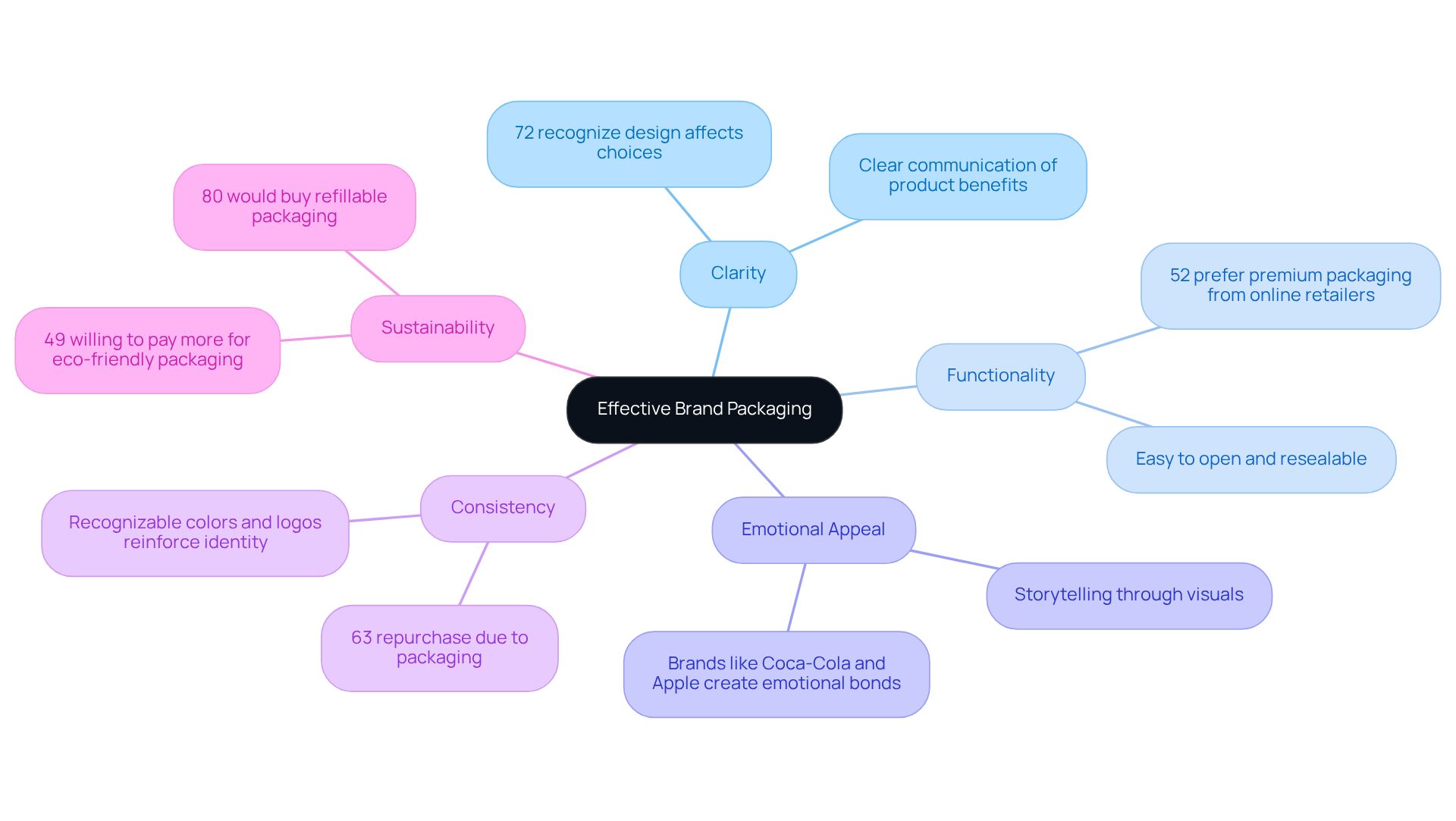
Examine Successful Examples of Brand Packaging Design
Various companies have adeptly harnessed creative container design to bolster their market presence. For example, Glossier's minimalist design exemplifies simplicity and elegance, resonating with a modern audience and enhancing brand appeal. In contrast, Ben & Jerry's employs vibrant and playful designs that not only reflect its fun personality but also captivate buyers with eye-catching graphics, fostering emotional connections. Unilever sets itself apart through its , utilizing recycled materials in its containers to convey environmental responsibility, which aligns with the growing preference for eco-friendly choices.
Statistics reveal that:
- 72% of American shoppers assert that product appearance significantly influences their buying decisions.
- 67% claim that the materials used impact their purchase choices.
- Approximately 50% of individuals in the US are willing to pay a premium for eco-friendly containers.
These successful examples illustrate how thoughtful packaging design can cultivate customer loyalty and drive sales, making it an essential component of brand strategy.
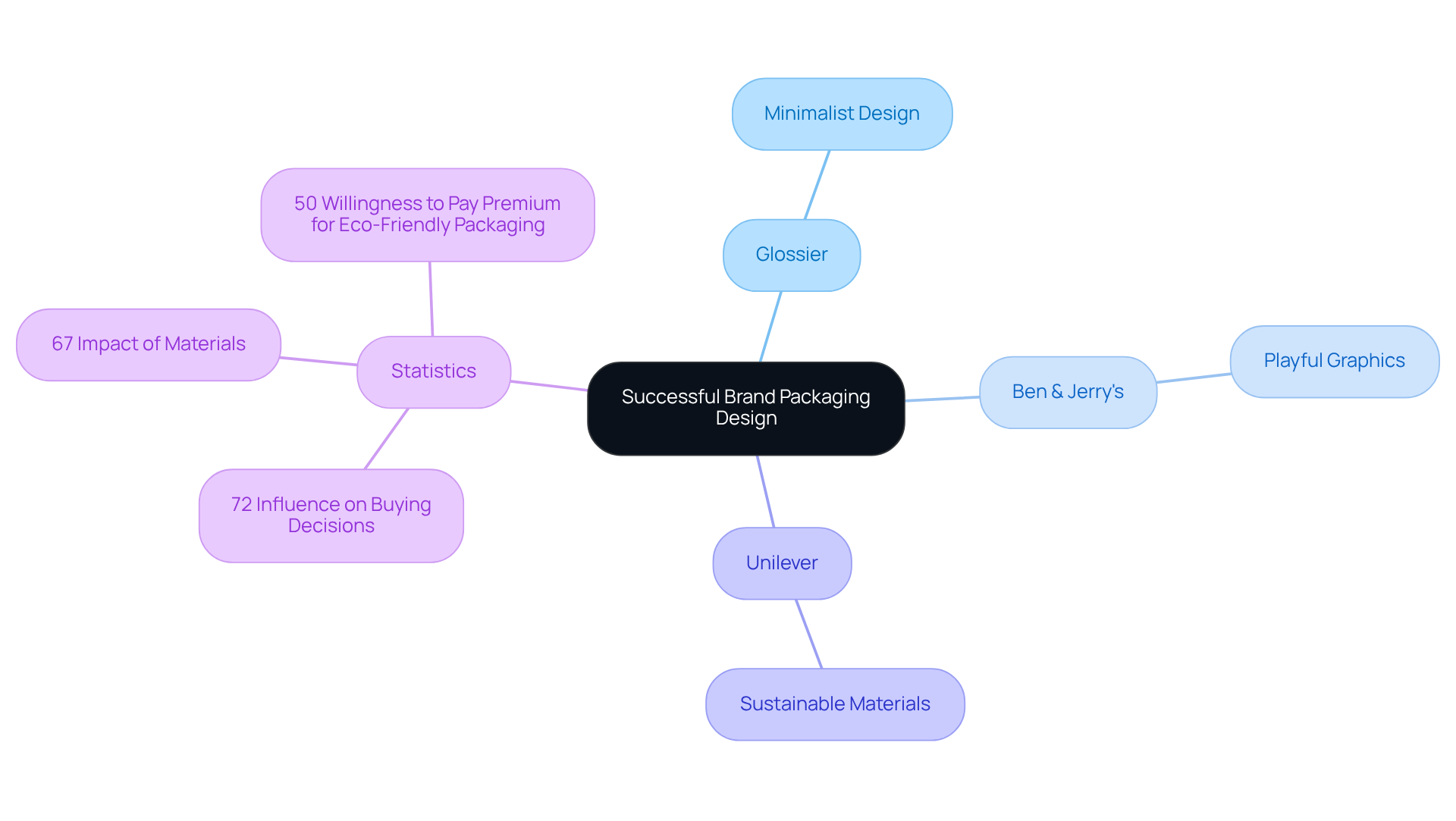
Discuss the Impact of Packaging Design on Consumer Behavior
The style of significantly influences buyer behavior, serving as a powerful marketing tool that shapes perceptions and purchasing decisions. Research indicates that consumers often form rapid judgments about products based solely on their presentation; studies reveal that 81% of shoppers have purchased a new item due to its visual appeal. Furthermore, 72% of American consumers make buying decisions influenced by design, underscoring its critical role in consumer choices.
Elements such as color, shape, and texture evoke emotions and convey brand values, ultimately affecting trust and loyalty. Authenticity and transparency in presentation are vital for fostering lasting relationships with consumers, as they enhance trust and commitment. For example, eco-friendly packaging can attract environmentally conscious buyers, while premium wrappers appeal to those seeking luxury products.
Brands that understand and leverage these psychological triggers in their brand packaging design are better equipped to capture consumer interest and drive sales. As Lydia Simmons, founder of M.O.O., aptly stated, "You are not the customer," emphasizing the importance of aligning packaging with consumer needs rather than personal preferences.
Drawing on insights from successful rebranding initiatives further illustrates the practical implications of effective brand packaging design.
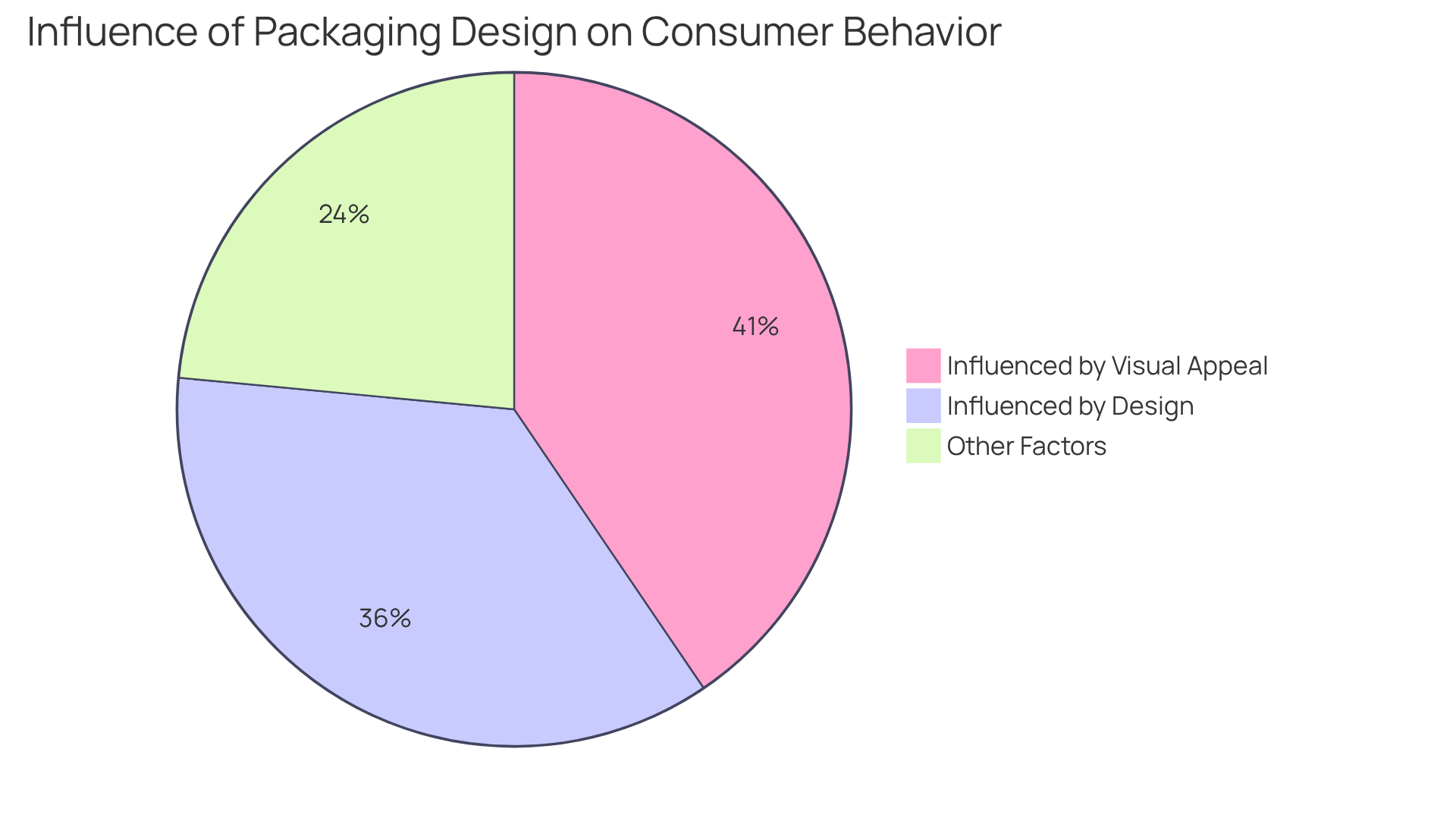
Conclusion
In conclusion, brand packaging design is an essential factor in defining a product's identity and ensuring market success. It goes beyond mere aesthetics; it functions as a critical communication tool that articulates a brand's values and engages consumers on various levels. The importance of effective packaging cannot be overstated, as it frequently creates the initial impression for potential buyers, influencing their decisions and fostering brand loyalty.
Throughout this exploration, key insights have illuminated the complex nature of brand packaging design. From its historical evolution to contemporary trends that prioritize sustainability and emotional resonance, it is evident that successful packaging strategies are grounded in a deep understanding of consumer behavior. Statistics reveal that a substantial percentage of consumers are influenced by visual elements, functionality, and eco-friendly practices, highlighting the imperative for brands to innovate and connect meaningfully with their audience.
In today's competitive marketplace, brands must acknowledge the power of packaging design as more than just a protective layer; it is a strategic asset capable of building trust, enhancing visibility, and ultimately driving sales. By emphasizing clarity, functionality, and sustainability, companies can develop packaging that resonates with consumers, encouraging repeat purchases and nurturing enduring relationships. Adopting these principles will ensure that brands not only meet consumer expectations but also flourish in an ever-evolving landscape.
Frequently Asked Questions
What is brand packaging design?
Brand packaging design refers to the visual appeal, structural integrity, and material selection of a product's exterior. It is crucial for conveying a company's identity and values while ensuring the product remains protected and functional.
Why is brand packaging design significant?
Brand packaging design is significant because it captures buyer interest, communicates essential information (like usage instructions and ingredient lists), influences purchasing decisions, and fosters brand loyalty. It often represents the first interaction between consumers and products.
How does packaging aesthetics impact purchasing choices?
Research indicates that 72% of buyers acknowledge the substantial impact of packaging aesthetics on their purchasing choices, and 76% have made impulse purchases driven by attractive packaging.
How can color psychology influence consumer behavior?
Effective use of color psychology in brand packaging design can evoke emotions and sway consumer behavior, with 85% of shoppers identifying color as a key factor in their purchasing decisions.
What role does user-friendly packaging play in customer satisfaction?
Brands that focus on user-friendly features, such as easy-to-open designs in their packaging, tend to enjoy higher customer satisfaction and loyalty.
What trends are shaping the evolution of brand packaging design?
The evolution of brand packaging design is shaped by sustainability trends, with approximately 50% of individuals in the US willing to pay a premium for eco-friendly containers. Companies are increasingly committed to creating eco-friendly options that appeal to environmentally conscious consumers.
How has digital technology impacted brand packaging design?
Digital technology has revolutionized brand packaging design by enabling companies to explore innovative materials and interactive styles that enhance user engagement, leading to more creative and personalized solutions for containers.
What is the importance of the unboxing experience in brand packaging design?
The unboxing experience shapes buyer perceptions; companies that invest in memorable packaging can set themselves apart and cultivate deeper connections with their customers.
How does brand packaging design contribute to a company's marketing strategy?
Brand packaging design is a fundamental aspect of a company's marketing strategy as it builds trust, conveys value, and can transform customers into advocates for the brand.
What services does Western Packaging offer in relation to brand packaging design?
Western Packaging specializes in innovative solutions tailored for nutraceutical manufacturers, incorporating eco-friendly materials and cutting-edge design techniques to enhance product visibility and appeal.




